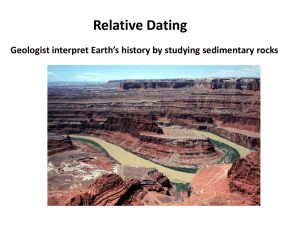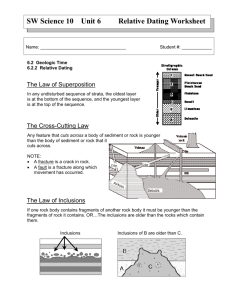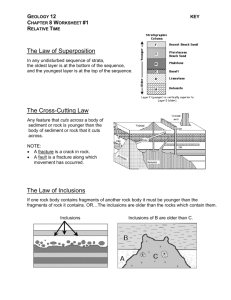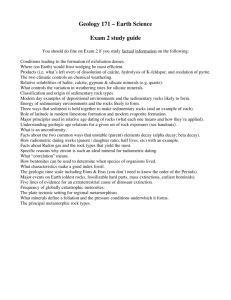The Rules for Relative Dating
advertisement
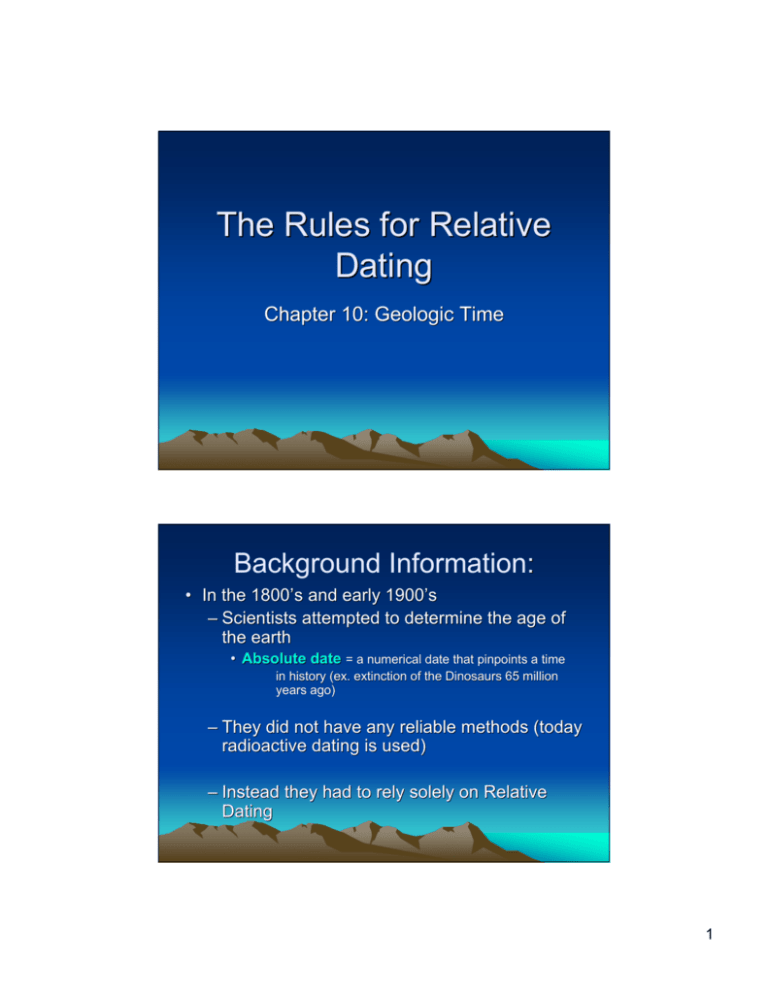
The Rules for Relative Dating Chapter 10: Geologic Time Background Information: • In the 1800’ 1800’s and early 1900’ 1900’s – Scientists attempted to determine the age of the earth • Absolute date = a numerical date that pinpoints a time in history (ex. extinction of the Dinosaurs 65 million years ago) – They did not have any reliable methods (today radioactive dating is used) – Instead they had to rely solely on Relative Dating 1 What is Relative Dating? • Relative Dating = placing rocks in their proper sequence of formation (which formed first, second, third etc.) • It can’t tell us how long ago something formed, only in what order • Relative Dating is still used today along with absolute dating The Four Rules of Relative Dating: 1) The Law of Superposition 2) The Principle of Original Horizontality 3) The Principle of Cross-Cutting Relationships 4) Inclusions 2 The Law of Superposition: – Nicolaus Steno (Danish anatomist, geologist and priest): Developed the law while working in the mountains of Western Italy in 1669 – The Law of Superposition = in an undeformed sequence of sedimentary rock, each bed is older than the one above it and younger than the one below it. (also applies to lava flows, and ash beds) Superposition Example: 3 The Principle of Original Horizontality: • Also developed by Steno • The Principle of Original Horizontality = layers of sedimentary rock a generally deposited in a horizontal position. – If the rock layers are flat, it means they have not been disturbed and still have their original horizontality – If the rock layer are folded or inclined, it means they must have been moved by some crustal disturbances after their deposition Original Horizontality Example: 4 The Principle of Cross-Cutting Relationships • The Principle of Cross-Cutting Relationships = when a fault cuts through other rocks or when magma intrudes and crystallizes, we know that the intrusion is younger than the rocks affected. Cross-Cutting Example: 5 Inclusions • Inclusions = pieces of one rock unit that are contained within another – The inclusions within a rock are older than the rock containing the inclusion because the inclusions had to have been there in order to be “included” in the rock Inclusions Example Step 1: 6 Inclusion Example Step 2: Inclusion Example Step 3: 7 8
